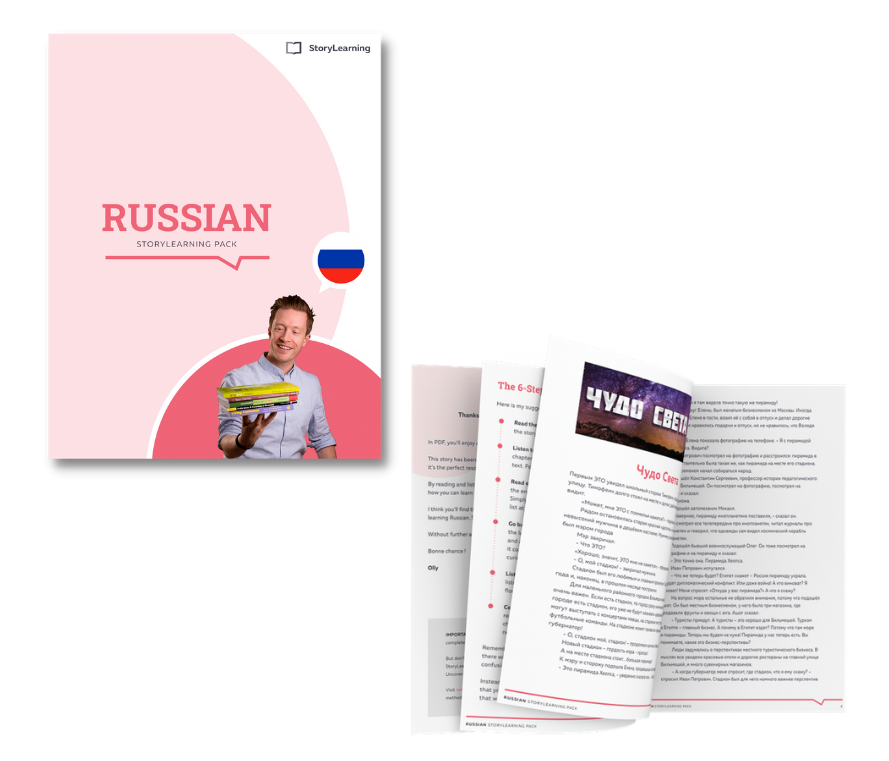Even if you’ve been learning Italian for a while, you may notice that the Italian spoken in mobster movies is hard to understand.
That’s because the language spoken in the Godfather, for example, often isn’t really Italian at all. At least not the Italian you’re thinking of.
But rather, it's one of the many separate languages along the boot that are not derived from Italian. If this sounds confusing, don’t worry — it’s actually pretty simple.
Standard Italian is pretty new, and is mostly based on the variant of Tuscan spoken in Florence. People in Florence do speak a very clear version of Italian, but they have their own dialect, which is not quite as easy to understand.
That's why I'm devoting a whole post to Italian dialects. The languages aren't a barrier to learning Italian. But rather, something that can enrich your knowledge of both the language and culture.
By the time you get to the end, you’ll know the essentials of the Italian dialects and be able to tell the difference between them.
Pro Tip
By the way, if you want to learn Italian fast and have fun while doing it, my top recommendation is Italian Uncovered which teaches you through StoryLearning®.
With Italian Uncovered you’ll use my unique StoryLearning® method to learn Italian naturally through story… not rules. It’s as fun as it is effective.
If you’re ready to start, click here for a 7-day FREE trial.
If you like watching videos, you'll find a video all about Italian dialects at the top of the page. Otherwise, keep scrolling to read the blog post.
Table of Contents
An Overview Of The Different Italian Languages & Dialects
So how come there are so many separate languages and dialects in one, relatively small, country? Because Italy only began to unify around 1848 – almost 100 years after the United States.
So all these separate regions, each with their own language and additional regional dialects, have had a long time to develop. And that’s why no two languages anywhere along the boot sound or feel the same.
Way up north, in Trentino Alto Adige, the local language is spoken in the back of the throat, far back — sort of like Kermit the frog, if he were Italian.
In Milano, speech is pressed down so that the sides of the words squeeze out, in a similar way to a New York accent. The intonation, too, is similar: you’re here and you want people to hear what you’re saying.
The language in Rome is full and confident, with stops and starts — as if the speaker was at the same time surprised but also trying to make a convincing argument.
Ligurian – spoken in Genoa, for example — varies inflection so much it almost sounds Portuguese, going up and down in a singsong way. Speech in Torino is prim and high pitched, while the language of the Veneto sounds like a foreigner just learning to speak Italian.
The language of Emilia-Romagna races away like an Italian sports car, so you better pay attention. Abbruzzese, in turn, rolls and rumbles out of the mouth, like a tractor starting up.
Neapolitan is hardly enunciated at all and so feels slow, pleasant and warm, along with being difficult to understand.
Sicilian sounds serious and is demanding on the ear, melodious in a manner fit for threats — which is why those are so effective delivered in the language.
Sardinian is blunt and filled with an adorably large amount of a sharply pronounced letter u, and about as hard to understand as it is endearing to listen to.
Speaking of which…
#1 Sardinian – Sardo

No appo compresu nutta. (I didn’t understand anything)
As mentioned, one main feature of the Sardinian language is that it is heavy on the u-s. You can see that above in the words compresu and nutta, which would be compreso (understand) and nulla (nothing, zero) in standard Italian. This switching of o and u can sometimes be the only difference between words.
Sardinia is an island that’s far enough north to have a winter and is an arid and windy place. Some of this is reflected in the language, which is blunt and has a dryer feel than speech further south.
Sardinian, Sardo, is recognized as a separate language unto itself. This means that each dialect, or language — used here interchangeably — comes with its own set of local versions.
Sardo is a language beloved all over Italy for its unique and cute sound, and words from it are often adapted. So that babbo, a word of Sardinian origin, is used to refer to fathers all over Italy. This borrowing of Sardinian words is called italianu porcheddìnu, or “piggy Italian”.
Key Features Of Sardo
A marker of Sardo is that it often shuffles the sentence structure, sort of like Yoda from Star Wars, like this:
- Essinde ses?
- Uscendo stai?
- Going out are you?
- Uscendo stai?
In standard Italian, this would go stai uscendo?
Another example:
- Istudiende fia.
- Studiando stavo.
- Studying was I.
- Studiando stavo.
Here, standard Italian sentence structure is: stavo studiando.
Also, importantly, there’s no length differentiation on vowels, so no Italian accents on a, e, i, o and u to mark a different sound — they always stay the same.
Here are some Sardinian proverbs to give you an idea:
- A S’arricai candu torra nonnu…
- A diventare ricchi quando torna nonno… (To get rich when grandpa returns (in other words never))
- A sciacquai sa conca a su burriccu, si perdidi abba, tempu e saboni
- A lavare (sciacquare) la testa all’asino si perde acqua, tempo e sapone. (To wash (rinse) a donkey’s head, you lose water, time and soap.)
Spoken Sardo presents a challenge due to the different intonation and sound. But, if you speak Italian already, you can often understand written Sardo reasonably well.
#2 Sicilian – Siciliano – Sicilianu

Pi fauri, parra chiu adaciu (Please speak more slowly)
The most popular dialect with the Italian-American diaspora, Sicilianu, or Siculu, like Sardo, is different enough from textbook Italian to deserve separate language status.
And also like Sardo, it uses a fair share of the letter u, but because of the differences between the two languages, the effect is not all that similar.
Sicilian is much wider and rounder, for one, taking its time with syllables before they leave the mouth, resulting in a quieter sound.
The largest island in the Mediterranean, Sicily has seen a lot of traffic throughout history: Greeks, Romans, Moors, Swabians, Spaniards, Austrians and Italians, to name a few, have set up camp here.
This is why Sicilian, and its many subdivisions draw so much influence from a number of languages. Words of Greek and Arabic origin can easily be pointed out, if you speak the languages.
Key Features Of Sicilian
Here are a few words as examples of the foreign influence on the Sicilian language:
- pistiari (to eat, from the Greek esthíō)
- sparagnari (to save money, from German sparen)
- azzizzari (to embellish, from the Arabic word azīz, meaning precious or beautiful)
- mafia (boldness, bravado, also from Arabic, mājās, or aggressive boasting)
Most of the time, where standard Italian words start with an i, it is dropped in Sicilian.
Sometimes, this is true for words that start with e, a and o.
For example:
- mpurtanti = importante (important)
- gnuranti = ignorante (ignorant)
With a thing for keeping things short, Sicilian is heavy on contractions. Thus a common expression such as avemu a accattari, meaning “we have to buy” (dobbiamo compare in standard Italian) will become amâ ‘ccattari when in informal company.
Most feminine nouns and adjectives end in -a in the singular, though soru (sister, same for plural) does not. The usual masculine singular ending is -u, as in omu (man), libbru or nomu (name).
Unlike standard Italian, Sicilian mostly uses the same plural ending for nouns of any gender and adjectives: casi (houses), or porti (doors). Sometimes, -um or -a will be used, instead, like in libbra (books) or jorna (days).
Now for the proverbs:
- Aceddu `nta la aggia non canta p`amuri, ma pi raggia.
- Uccello in gabbia non canta per amore, ma per rabbia. (The caged bird sings not out of love but rage.)
- Acqua, cunsigghiu e sali a cu n`addumanna `n ci nni dari.
- Acqua, consiglio e sale non darne a chi non te ne chiede. (Water, advice and salt should not be given to who is not asking for it.)
In terms of a written tradition, Sicilian is the oldest of modern Italian languages. About five million people speak it today, with younger people moving steadily towards using standard Italian.
#3 Napoletano

Ma staje pazziann? (Are you kidding me?)
Napoletano is very loose, relaxed and takes care to emphasize what is being said in a way that makes it sound light-hearted but also gives it a sense of seriousness.
You can come across Napoletano across much of southern Italy, and even in a small part of central Italy (in Ascoli Piceno, Marche). A large number of speakers in the United States make this language, like Sicilian, familiar to trained foreign ears.
In Napoli, where love is king, it’s not all about u, for once, but about doubling up on letters. When in doubt, use two, and remember that unlike standard Italian, the Neapolitan alphabet does use the letter j, but does not contain k, w, x, or y.
Key Features Of Napoletano
But back to the doubling: when does it happen? Many, many times, as it turns out. And the rules are seemingly random, so they have to be memorised. Here are some of them…
- The feminine plural article ‘e (‘e ffemene, le donne, the women)
- The singular article ‘o (‘o ppane, il pane, the bread)
- The prepositions a and pe (a mme, pe tte, a me, per te, for me, for you)
…and there are many more. Also, forget about doubling when there’s a second consonant after the first. For instance, while there’s doubling here:
- ’o ttaliano = l’italiano (the Italian (language))
it doesn’t happen here:
- ’o spagnuolo = lo spagnolo (the Spanish (language))
Let’s look at a few proverbs. It might be fun to try and say these aloud, even if you can’t really understand the writing. The written version of Napoletano lends itself wonderfully to correct pronunciation.
- Quann’ ‘o mare è calmo, ogni strunz è marenaro.
- Quando il mare è calmo, ogni stronzo è marinaio. (When the sea is calm, every fool is a sailor.)
- So’ cadute l’anielle, ma so’ restate ‘e ddéte.
- Sono caduti gli anelli ma sono rimaste le dita. (The rings have fallen off, but the fingers remain.)
As you can imagine, Neapolitan wisdoms are known and loved all over the country, and for good reason.
#4 Venetian – Veneto

Na ƚengua soƚa no ƚa xé mai bastansa (One language is never enough)
Close to the area where standard Italian is spoken, one of the most particular Italian dialects in the country thrives: the Venetian language, łéngoa vèneta or vèneto.
This well-preserved language is spoken in the Veneto region, but people understand and, to some extent, speak it in some surrounding areas, as well.
Venetian has a casual feel to it and a sound a little similar to Spanish, but with slavic undertones. The letter s, in particular, gets a Spanish makeover and is notably different from standard Italian pronunciation.

Key Features Of Veneto
The letter x is used frequently to take the place of an s in standard Italian, like in this case:
- Ti xe
- Voi sei
- you are
- Voi sei
Since this region is so close to a German language country, you will often find germanic influences, such as with trincàr (to drink), which is trinken in German.
The Venetian language has influenced other languages, itself. Here are some venetian-origin words that other languages use:
- Ballot, Ballottaggio: from bałote, the balls used during the election of the doge of Venice, of which one was chosen by a child in a ceremony at piazza San Marco
- Arsenale, Arsenal: from Arabic as-sina’ah, meaning factory
Even that most Italian greeting, ciao, comes from Venetian: s'ciavo (schiavo, slave), an abbreviation of s'ciavo vostro, or “your slave”, meant in the sense of “I am at your service”.
Take a look at these Venetian proverbs:
- A chi nasse sfortunai, ghe piove sul cul a star sentai.
- A quelli che nascono sfortunati, gli piove sul sedere perfino seduti. (Who is unlucky will get their butt rained on even they are sitting.)
- A pagar e a morir, gh'è sempre tempo.
- Per pagare e per morire c'è sempre tempo. (To pay and to die, there’s always time.)
#5 Lombard – Lombardo And Milanese

La boca i ghe l’à toeucc, el co i ghe l’à poc. (Everyone has a mouth, but few have a head.)
The easiest way to separate a northern accent from a southern one in Italy is by listening for a z sound where there ought to be an s, like in the case of casa or cosa (“house” and “what”), both pronounced like “caza” and “coza” in the northern part of the country. This is especially typical and evident in the Milanese dialect.
In Milano, speech is more angular, words lengthened and it’s very close to written standard Italian. Things are over-emphasized rather than under-pronounced.
For this reason, Milan is a great place to go if you’re just beginning to speak Italian. But there is of course a local dialect, Lombardo, in the area, though it is much less frequently used than Italian dialects in other parts of the country.
Few people in Milan proper speak Lombardo or even Milanese, called Meneghin in the language, besides a few funny or otherwise memorable sentences.
You’re more likely to find speakers in the villages surrounding the city, if at all. Generally, all Lombard speakers speak Italian, and just as well. So this language is mostly relegated to the family home or remote villages, which means you likely won’t hear it much.
Key Features Of Lombardo And Milanese
Here are a few examples of the Lombard language:
- cumè che l'é? = com’è (how is it?)
- a parlen no = non parlano (they don’t speak)
There is a way of saying things in Lombardo not used elsewhere in Italy, but common in the English language:
- hoo vist nissu(n) = non ho visto nessuno (I saw nobody.)
A popular turn of phrase is “to be behind” something. Used in this way, it’s something like “being into” in English:
- te set (a) dré a cantà? = tu sei dietro a cantare? (stai cantando?) (are you behind/into signing?)
The letters “oeu” are pronounced like French for “eu” or the German o umlaut, ö.
U is mostly pronounced like the French u or German u umlaut, ü, so that, malumor, malumore (bad mood) becomes “malümor”.
Italians, and Milanese people themselves often caricature this aspect of Lombardo and Milanese, as a uniquely recognisable part of the dialect.
Finally, let’s look here, too, at some proverbs:
- La minestra di alter l'è semper la pussee bòna
- La minestra del vicino è sempre più buona. (The neighbour’s soup is always more tasty)
- Voeuja de lavorà saltom adòss che mì me spòsti
- Voglia di lavorare saltami addosso che io mi sposto (The will to work, jump on me, and I will move myself.)
#6 Tuscan And Florentine – Vernacolo Toscano E Fiorentino

Una hoha hola hon la hanuccia horta holorata (A coca cola with a short, colored straw)
As I mentioned above, standard Italian is based on Tuscan, more exactly Florentine, so it's an easy dialect to get the hang of.
It spread through the country as the language of the arts, with famous Florentine writers like Dante Alighieri or Niccolo Machiavelli hailing from the city.
The introduction quote to this chapter is, in Italy, the most iconic and famous phrase of the Florentine dialect. It’s easy to see why: it sounds like a thing a child with a speech impediment would say. Well, it’s not an impediment: it’s called la gorgia toscana, or the tuscan throat.
Key Features Of Tuscan And Florentine
Whenever c would normally be pronounced as a k, as in coca cola (but not ciao), an h is substituted.
There are, of course, a number of exceptions to this. A c that comes after a preposition stays like in standard Italian, so you would say: si va a casa (one is going home) and not si va a hasa.
When a c is followed by the letter i or e, it stays the same as well: Stavo a Cina (I was in China), not Hina.
But then, even the letter t is sometimes pronounced as an h, like this:
- daho = dato (given)
Also, te appears where tu would be the standard Italian version.
- Te cosa dici? = Tu cosa dici? (What do you say?)
In the dative case, standard Italian uses a me or mi (to me). The Tuscan version of this just uses both at once, like this:
- a me mi piace = a me piace or mi piace (I like it)
In English, you could compare this to saying “me, I do like it”. While not correct grammatically, you'll come across it all over Northern and Central Italy. Like many dialects, Tuscan also does a fair bit of shortening:
- fo = fare/faccio (to do, I do)
- vo = andare/ vado (To go, I go)
Also, whenever a verb ends on -re, you can just cut that off, no trouble:
- andà = andare (to go)
- finì = finire (to finish)
Italian Dialects FAQ
How many dialects of Italian are there?
Italy has hundreds of dialects, often grouped into regional varieties.
Linguists commonly classify Italian dialects into around 20 main groups, which include distinct languages such as Sicilian, Venetian, Neapolitan, and Tuscan.
These Italian dialects vary significantly from standard Italian in vocabulary, pronunciation, and grammar.
What are the 3 main languages spoken in Italy?
The three main languages spoken in Italy are:
Italian – the official and most widely spoken language.
Regional Dialects – such as Neapolitan, Sicilian, and Venetian, which are often distinct from standard Italian.
Minority Languages – including German in South Tyrol, French in Valle d’Aosta, and Slovene in Friuli-Venezia Giulia.
Do Sicilians speak a different dialect of Italian?
Yes, Sicilians often speak Sicilian (Sicilianu), a distinct Romance language with influences from Greek, Arabic, and Spanish.
While many Sicilians also speak standard Italian, the Sicilian dialect has its own vocabulary, grammar, and pronunciation, making it quite different from standard Italian.
What is the most popular Italian dialect?
The Tuscan dialect, specifically the Florentine variety, is the most popular because it forms the basis of standard Italian.
It gained prominence through the works of Dante Alighieri, Petrarch, and Boccaccio.
However, regional Italian dialects like Neapolitan and Sicilian remain widely recognised and culturally significant.
Italian Dialects: A Tradition To Keep Alive
So finally, you can see that the languages of Italy are many. And each one is beautiful and valuable in its own, unique way.
Sadly, these small, local languages are fading from use. Everyone ought to do their part in keeping them alive, even if just by showing an interest in them.
Learning to speak these Italian dialects won't be necessary to make yourself understood in any part of the country, save perhaps for the most rural places.
But people all over Italy do speak the school-taught standard, if maybe with an accent.
Still, it’s always nice to understand, and sometimes say something in, the language of the people you’re getting to know.
So even if you don't need to worry too much about Italian dialects as a learner, they can still be an enriching part of learning this language.

Olly Richards
Creator of the StoryLearning® Method
Olly Richards is a renowned polyglot and language learning expert with over 15 years of experience teaching millions through his innovative StoryLearning® method. He is the creator of StoryLearning, one of the world's largest language learning blogs with 500,000+ monthly readers.
Olly has authored 30+ language learning books and courses, including the bestselling "Short Stories" series published by Teach Yourself.
When not developing new teaching methods, Richards practices what he preaches—he speaks 8 languages fluently and continues learning new ones through his own methodology.









































